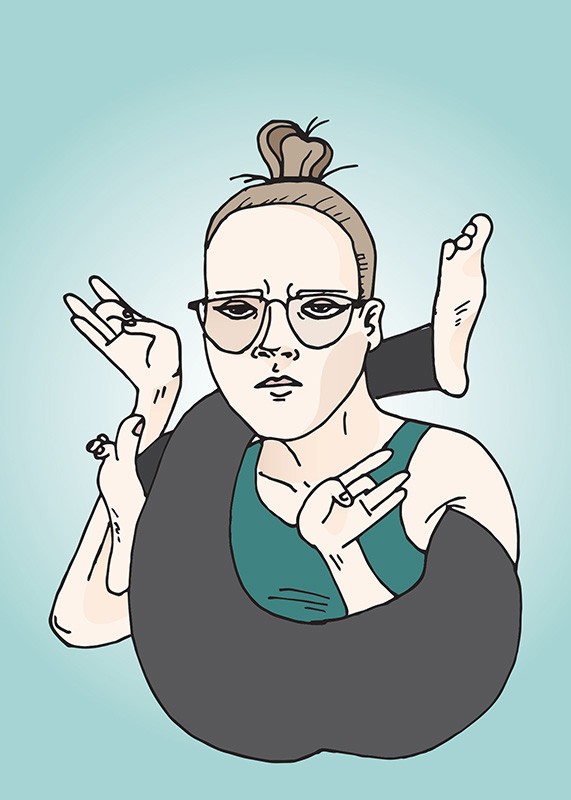My never-ending quest for Zen
Musings from a wannabe yogi
A little over three years ago, I embarked on a quest of epic proportions. After years of floating through life with no real aim or purpose, I had to make a change.
So, I did what any other white, middle-class, 20-something female living in North America would do: I signed up for yoga.
I found a studio not too far from my house (as a Wolseley resident, this wasn’t too hard) and picked out the perfect yoga outfit - stretch pants and a tank top.
But then I hit my first snag - do true yogis shave their armpits, or let their inner chi express itself through long, unhampered body hair?
I discovered there is not just one way to practice yoga, which was another hitch in my get-enlightened-quick scheme.
Would I have to try them all to be a true yoga master? My instructor said no, and that there are dozens of yoga styles to choose from.
The type of yoga I do is called Iyengar, named after B.K.S. Iyengar, the 93-year-old Indian fellow who’s been practicing and teaching yoga for over 70 years.
We spend the class in a variety of asanas, which is the Sanskrit word for pose. These include such gems as gomukhasana (“cow’s head pose”), which involves holding one bent arm beside the side your head and making a grab for your other hand, which wraps around your back.
Forgive me if my instructions are confusing; I have not yet reached Zen.
Iyengar yoga is different from other styles because Iyengar knows what it’s like to be a stiff, out-of-shape oaf such as myself.
To help out with poses, we equip ourselves with straps, blocks, chairs, blankets, bolsters and other nirvana-inducing paraphernalia.
“ Forgive me if my instructions are confusing; I have not yet reached Zen.
Sometimes I feel, however, that these tools are a hindrance on my path to Zen.
At the end of class we spend a few minutes in my favourite pose, shavasana, whose English translation (I kid you not) is “corpse pose.” (Finally, something I’m comfortable with - resembling a dead body. Don’t need any straps for this one, thank you very much!)
During shavasana, the instructor tells us to free our minds of all thoughts, which is not so easy for a neat freak like me.
How can I free my mind when I’m surrounded by clutter? Throw me a bone here, Iyengar.
Shavasana can be taxing, as I often find myself getting angry with my instructor for telling me to free my mind.
“You can’t tell me what to do,” I think to myself. “I play by my own rules!”
It’s hard to find Zen when you have these intense battles raging within you.
Becoming a yogi is not without its challenges.
For example, after a long day of school or work, it can be hard to motivate myself to go stand barefoot in a roomful of strangers, when it’s just as easy to find enlightenment at the bottom of a chip bag.
Even though I sometimes find the lingo hard to swallow (“feel the skin of your inner right thigh slide over the outer bone if your inner lower sacrum”) and the inevitable yoga-farts hard to not laugh at, I must say I’ve thoroughly enjoyed my never-ending quest for Zen so far.
You have to find the yoga that’s right for you, and it doesn’t matter if you have years of experience, designer yoga duds or hairy armpits.
Published in Volume 67, Number 8 of The Uniter (October 24, 2012)







